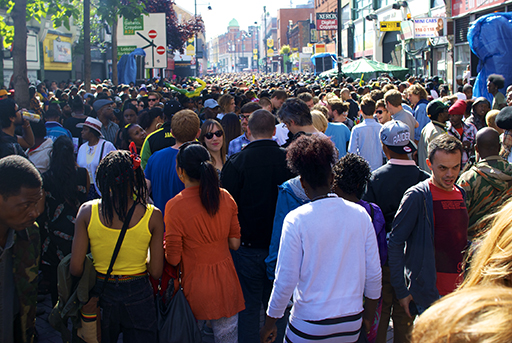2 Identifying community stakeholders and assessing their interests
2.1 Introducing stakeholders
In your work or volunteering – or other areas of your life – you may have noticed that some individuals and groups have quite a lot of power in deciding how your community is run or how services are provided. Power means the potential to influence, but whether people use this power will depend on what interest they have in influencing the community.
Some people have little power but a lot of interest in how things are run, what is done by and for the community, and the quality of the services provided. These individuals or groups could be community residents, service users, volunteers, local business owners and employees, employees of community service providers and the local media, to name a few. These are some of the many stakeholders in the community.
In Week 3 you will be introduced to different sources and forms of information which makes sense of complex issues and problems which many communities face. Many of the people who need to know this type of information are the community’s stakeholders. In this session you will explore their role and contribution.
There are many reasons why it is important not to neglect stakeholders: ensuring that people are consulted can help less powerful groups have a voice in decision making but equally, some groups may decide to campaign against a decision made by staff or trustees. These groups may be powerful enough – or rally enough support – to reverse decisions or to prompt action. For example many police forces around the UK have established local advisory groups to inform the policing team in their area of the community’s priorities and ongoing concerns.
In this session you will think about the stakeholders in your community, explore the different perspectives they hold and the amount of power each has to influence how the organisation fulfils its mission. You will also learn about some of the ways in which community services and voluntary organisations work and communicate with their stakeholders.
The stakeholder approach originated with business and management theorists in the 1960s as a way looking at an organisation’s priorities and how they are reached. The term stakeholders encompasses many different people and groups who have an interest in how well an organisation is run, including a business’s shareholders who obviously want a return for their investment. When we apply the term stakeholders to voluntary organisations, it has a similar meaning but the stakeholders are different.
In the context of community activities, stakeholders are individuals or groups that have a ‘stake’ in, are affected by, or can have an effect on those activities.
Activity 3 Brixton Splash – Organising a community event
‘Brixton Splash’ was a community festival which ran from 2006 until 2016 when public safety concerns about its organisation were raised. Read the following extract from the promotional literature of the festival in 2015, and make a list in your learning journal of who you think the stakeholders are.
Brixton Splash is an annual free street music festival in Brixton, London, which started in 2005. It is organised by a community organisation and uses volunteer stewards on the day. It currently has funding from the Arts Council and has had funding from Lambeth Council in the past. Its aims are:
- To promote and celebrate African-Caribbean heritage and culture, and its influence in the local area and beyond.
- To promote equality and diversity for public benefit through an inclusive festival that will foster understanding and harmony between people of diverse backgrounds.
- To advance education in music, arts, heritage and culture through a festival and outreach programme that will bring people of diverse backgrounds together for the appreciation and celebration of African-Caribbean culture and Brixton.
We celebrate our community’s diversity, its progress through the years and the fusion of numerous ethnic groups that now call Brixton home, by creating a cultural explosion proudly specific to our location and history. We successfully balance welcoming those who are just discovering Brixton with those who have always believed in Brixton’s unique identity, throughout the years. We remain loyal to and proud of our Afro-Caribbean heritage which has defined our community since the Windrush generation of the late 1940s and 1950s.
The Festival is a celebration of community cohesion, vibrant inner city living and Brixton’s contribution to the wider world. Brixton is currently the go-to area in London to enjoy everything culinary and creative with big name businesses moving to the high street and entrepreneurs developing the markets.
Lambeth is one of the most diverse boroughs in the country, with over 130 languages spoken. Brixton sits in the heart of the borough and is a bustling hive of activity. There is a strong history of music and the creative arts and numerous cultural groups are based in the area.
Our Festival is free for everyone, operates between midday and 7 pm on the first Sunday in August every year and has become a premier event in the London Events Calendar.
Each year we improve and enhance the content of our event to build on its success and broaden its appeal.
Comment
The stakeholders include:
- the local community
- local businesses
- volunteers and staff
- Lambeth Council
- the police
- visitors to the event from outside the community
- sponsors.

